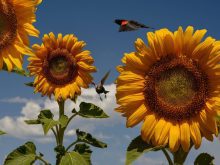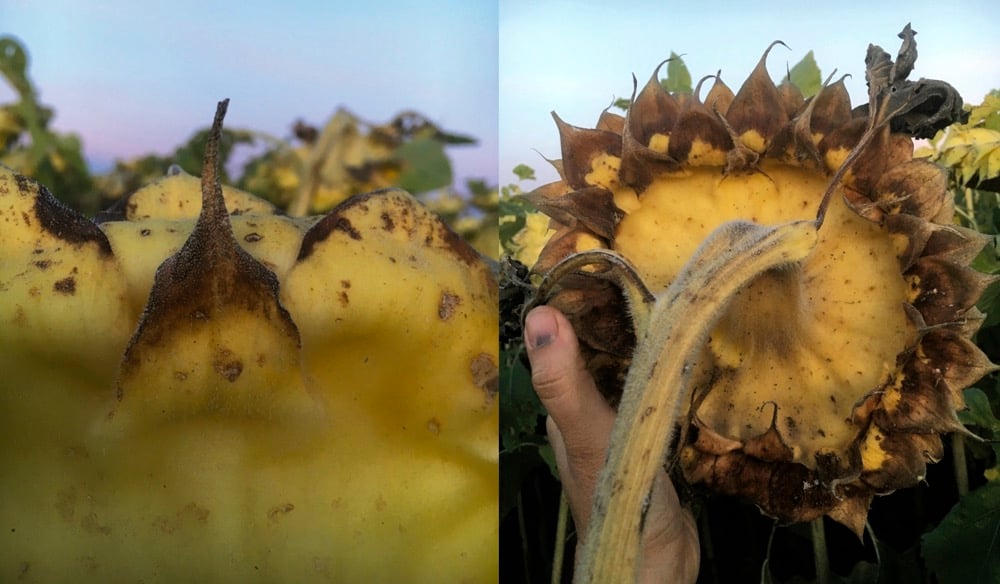Manitoba sunflower growers who grapple with crop losses from blackbirds might find help through new data.
Research from the University of North Dakota used weather surveillance radar to track red-winged blackbird behaviour during critical feeding times, which could help farmers develop effective strategies to protect their harvests.
Why it matters: Producers cannot claim blackbird damage under MASC’s crop wildlife damage insurance.
Read Also

Manitoba boosts stake in cereals centre to $23.5 million
Premier Wab Kinew said the additional project funds will help ‘Trump-proof’ the provincial economy.
The research comes from a long-term project at the university, which ran from 2012 to 2019. North Dakota’s sunflower growers lose an estimated US$3.5 million a year due to blackbirds, according to the study.
Researchers derived daily estimates of blackbird numbers at a fall roost in North Dakota during the multi-year study. They discovered that most crop damage happens during a brief period in October, when the peak population of blackbirds coincides with large fields of mature, unharvested sunflowers.
Those study results are likely applicable in Manitoba.
“Blackbirds are a big concern, especially in September and October. This is their peak time for feeding on sunflowers before they migrate,” said Manitoba Agriculture oilseed specialist Sonia Wilson.
The birds tend to move as a flock, and Wilson noted that when a single field catches that flock’s eye, damage can be quick and extensive.
It’s hard to estimate the damage because there is no insurance data available. Manitoba Agricultural Services Corporation does not offer blackbird damage coverage for crops.
Because of that, Manitoba sunflower growers seek strategies to limit damage. They can include visual deterrents like scarecrows, or harassing the birds either by shooting at them, buzzing them with drones or by using noisemakers. Some farmers use cannons (bangers) on a timer to scare the birds off. Other sound effects emulate noises that blackbirds associate with predators, called squealers.
From anecdotal observations, Wilson said squealers seem to be more effective than other deterrents.
There is also a chemical repellent in the U.S. called Avian Control that is not yet registered in Canada. Manitoba Agriculture and the Manitoba Crop Alliance are working on to get that product an emergency use registration for next year. If that gets approval, the Manitoba farm group would start trials to test its effectiveness in Manitoba fields.
“It is already registered for sweet corn and would provide another option,” she said.
Environment can play a role in blackbird management. A 2019 study published in the American journal Pest Management Science showed that proximity to wetlands can be a good predictor of where damage will occur.
Wilson said some of that research showed that if a field is within three kilometres of a wetland, damage can be twice as bad compared to fields moer than six kilometres away.
The North Dakota study also suggested farmers might dodge the peak damage window in October if crops are planted earlier and if earlier varieties are used.
How weather radar could affect blackbird management
Wilson said an intriguing aspect of the North Dakota research is the methods used to track blackbirds. She noted that advance knowledge of blackbird activity could give farmers a leg up in terms of response time and help limit yield damage.
“Tracking blackbird populations is hard. Tracking through radar could provide better response time and estimates for yield damage.”
It could also tell farmers when the birds arrived, whether they are revisiting fields and whether populations are larger than usual, she added.
The authors of the study said use of weather surveillance radar has the potential “to enable more rigorous assessments of a variety of management tools,” but also noted the method needs fine tuning. For instance, blackbirds fly lower during moult in August and early September, which could affect the accuracy of counts.
“Further research is needed to compare methods and determine whether large numbers of blackbirds remain undetected by radar,” the authors said.
A previous version of this article mistakenly said that the Manitoba Crop Alliance was testing a chemical repellant called Flock Free.















